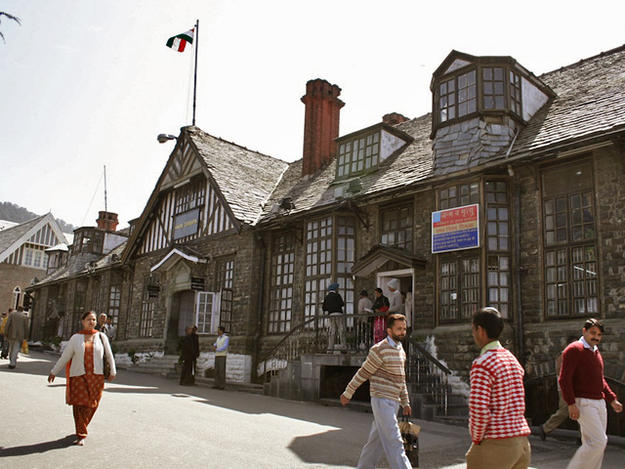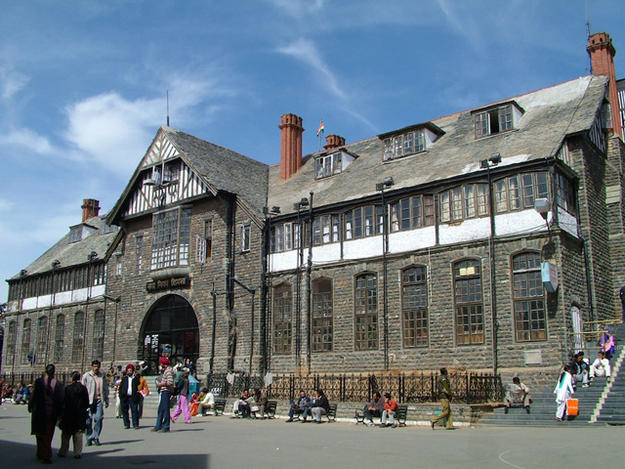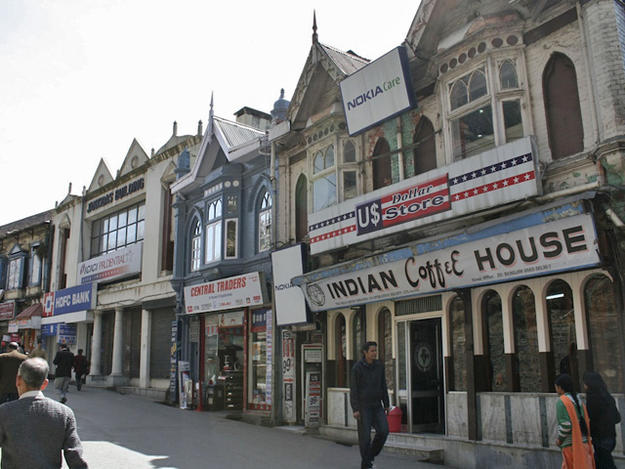Historic Civic Center of Shimla
2010 World Monuments Watch
Until the first half of the 19th century, Shimla was an obscure village along a ridge in the mid-Himalayan ranges. Despite its isolation, during the 1830s the town became the summer retreat of the British during their colonial rule of India, thus transforming Shimla. After a municipal committee was established in 1851, a core of civic buildings was constructed along a 3.7-mile (6-kilometer) axis known as the Mall. The spine of this district stretches from the neo-Gothic Christ Church on the east over to the Telegraph Office on the western boundary, with the iconic greystone Town Hall as its centerpiece. Other important public structures built in this era include the Gaiety Theatre, the tallest five-story building of the period, and the General Post Office Building, which is the oldest post office in modern India. In 1864, Shimla was officially declared the summer capital of the British Indian Government and survives today as a rare example of a migratory capital of the British colonial era. In its postcolonial context, appreciation for Shimla’s architecture has flourished and the values of this heritage have been embraced by the local population. However, increased and unplanned development has caused considerable degradation to the town’s historic urban fabric. Collective action is proposed to ensure its preservation, including an overall management plan for the historic district, conservation projects for select historic structures, and sustainable adaptive reuse of those structures.



